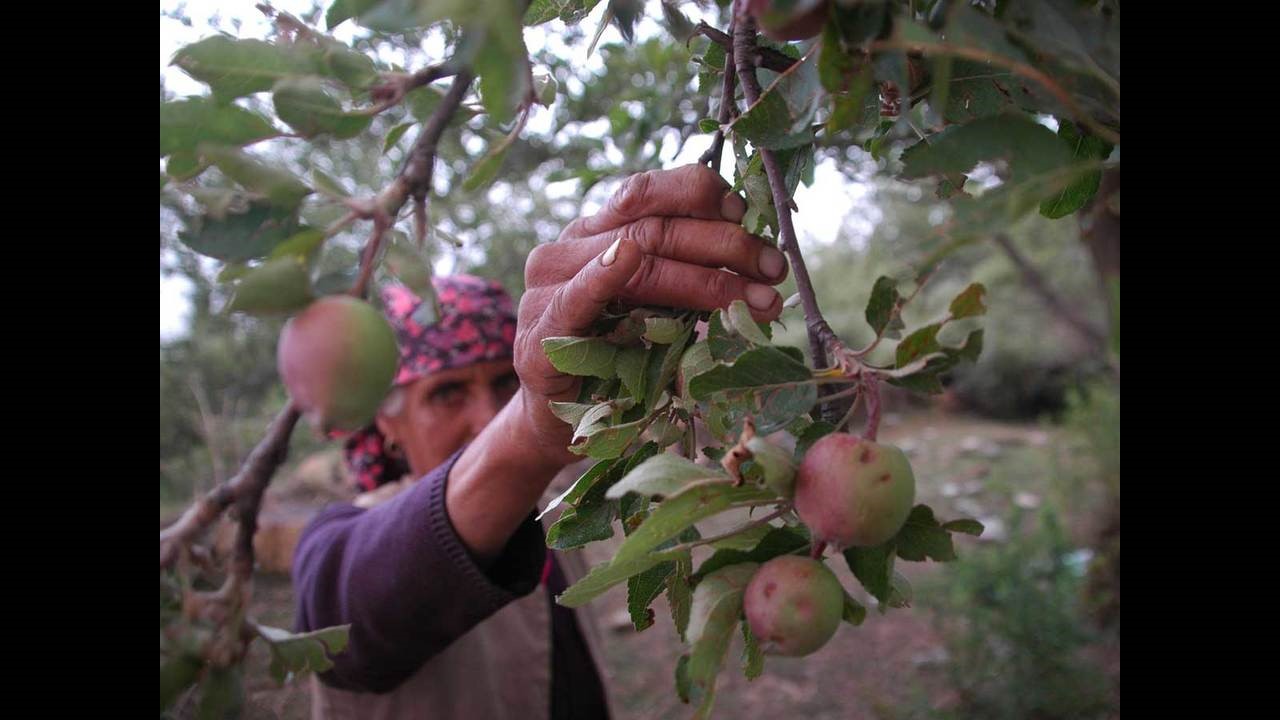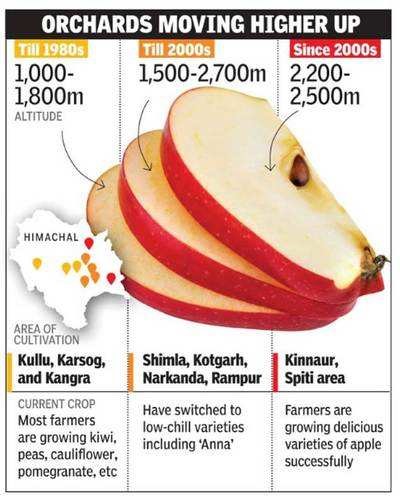Description

Disclaimer: Copyright infringement not intended.
Context
- Over the past few decades, a gradual warming of temperatures has been observed, making apple cultivation viable in the lower regions of Spiti.
Initial Challenges
- Harsh Climate: Spiti, located along the borders of India and China, was initially considered unsuitable for apple cultivation due to its harsh climate characterized by freezing temperatures.
- Early Attempts: Around three decades ago, a few residents experimented with planting apple trees in their kitchen gardens. However, these early attempts yielded minimal fruit due to the harsh climate and lack of proper knowledge and maintenance.
Gradual Warming and Agricultural Shift
- Climate Change Impact: Over the past few decades, a gradual warming of temperatures has been observed, making apple cultivation viable in the lower regions of Spiti, up to an elevation of 3,400 meters above sea level.
- Economic Transition: Recognizing the economic potential of apple cultivation, farmers began transitioning from traditional crops like barley and potatoes to growing apples. This shift marks a significant transformation in the region’s agriculture.
Impact of Natural Disasters
- 1975 Earthquake: A devastating earthquake in 1975 compelled the residents of Kaurik village to seek refuge in Hurling. The resettled village, named Chandigarh, began small-scale apple cultivation in 1979-80.
- Modern Success: Farmers in Spiti, now reap significant economic rewards from apple cultivation, earning up to Rs 12 lakh from 10 bighas of land, compared to the minimal earnings from traditional crops.

Socio-Economic Benefits
- Increased Income: The transition to apple cultivation has dramatically increased the income of farmers. Previously, a marginal farmer with 3-4 bighas could generate only Rs 4,000-5,000 annually from potato and barley. Now, the same area can yield up to Rs 15 lakh annually from apples.
- Education and Empowerment: The increased income has enabled families to send their children to pursue higher education in distant cities like Shimla, Dharamshala, Chandigarh, and even Delhi. This has significantly improved the socio-economic conditions of the community.
Expansion and Future Prospects
- Scientific Methods: With guidance from these research institutions, farmers adopted scientific cultivation methods, leading to the expansion of apple farming to over 660 hectares. In the 2023-24 season, Spiti Valley produced approximately 196,000 boxes of apples, valued at around Rs 34 crore.
- Market Reach: Spiti apples are now sold in major Indian markets, including Delhi, Rajasthan, Mumbai, and Chennai, with a significant portion also earmarked for export.
- Natural Farming: The KVK promotes natural farming techniques through Front Line Demonstrations (FLD), showcasing various natural farming methods in farmers’ fields. This initiative aims to produce chemical-free apples and demonstrate the effectiveness of natural farming practices.
Conclusion
- Limitations: Despite the success, apple cultivation has not extended beyond 3,400 meters above sea level due to climatic constraints. This has led to some envy among farmers in higher regions who are awaiting climate moderation to benefit from apple cultivation.
- Global Esteem: Spiti’s apples are esteemed globally for their exceptional quality and extended shelf life. The future of the apple industry in Spiti depends on the farmers’ cultivation choices and the continued support from the scientific community in facilitating sustainable and profitable agricultural practices.
|
PRACTICE QUESTION
Q. Climate change has led to the upward shift of apple cultivation in Himachal Pradesh. Analyze the factors driving this shift and evaluate the potential risks and opportunities it presents for the local agricultural economy.
|
SOURCE: Down to Earth













